Can A Side-By-Side Be Street-Legal?

Side-by-sides, also known as utility terrain vehicles (UTVs), are popular for recreational and utility purposes, such as hunting, farming, and exploring trails.
But can a side-by-side be street-legal? The answer depends on where you live and what modifications you make to your vehicle.
This short answer just scratches the surface. In this blog post, we will explain what a side-by-side is, how it differs from other off-road vehicles, state laws for side-by-sides, methods to make your SxS street-legal, and more.
Read on and explore now!
- Understanding Side-By-Sides
- Street-Legal SxSs
- Non-Street-Legal SxSs
- State-Specific Legislation for Side-By-Sides
- Make Your Side-by-Side UTVs Street Legal
- Alternatives to Street-Legal Side-By-Sides
- Conclusion
- FAQs
Understanding Side-By-Sides

To begin with, let's first define what a side-by-side is and how it compares to other types of off-road vehicles.
A side-by-side vehicle is a type of off-highway vehicle (OHV) that has four or more low-pressure tires, a steering wheel, non-straddle seating, and a rollover protective structure. SxSs are also known as utility terrain vehicles (UTVs), recreational off-highway vehicles (ROVs), or multipurpose off-highway utility vehicles (MOHUVs).
Common Uses for Side-By-Sides
You can use a side-by-side for various purposes, such as:
-
Recreation: Many riders enjoy riding their SxSs on trails, dunes, mountains, and other off-road terrains. SxSs can offer a fun and exhilarating experience for you, regardless of your age and skill level.
-
Utility: SxSs are also excellent for work-related tasks, such as farming, ranching, landscaping, construction, and emergency services. They can carry heavy loads, tow trailers, and navigate rough terrain.
-
Hunting: SxSs are ideal for you if you need to transport your gear across long distances. They can also access remote areas that are otherwise inaccessible by conventional vehicles.
Differences Between Side-By-Sides and Other Off-Road Vehicles
Side-by-sides are completely different from all-terrain vehicles (ATVs), motorcycles, or dirt bikes. Here are some key differences:
-
Seating: SxSs have non-straddle seating, meaning that the riders sit side by side in a cockpit-like cabin. In comparison, ATVs, motorcycles, and dirt bikes have straddle seating, meaning that the riders sit on top of the vehicle with their legs on either side.
-
Steering: SxSs have a steering wheel, similar to a car or truck. ATVs, motorcycles, and dirt bikes have handlebars that the riders use to steer the vehicle.
-
Capacity: SxSs can seat two or more people. Some SxSs can even accommodate up to six passengers. ATVs, motorcycles, and dirt bikes typically seat one or two people at most.
-
Safety: SxSs have a rollover protective structure (ROPS), which is a metal frame that surrounds the cabin and protects the riders in case of a rollover. SxSs may also have seat belts, windshields, doors, roofs, and mirrors. ATVs, motorcycles, and dirt bikes do not have any of these features and expose the riders to more risks.
Street-Legal SxSs
Street-legal side-by-sides (SxSs) are off-road vehicles modified to comply with on-road regulations. They feature additions like proper lighting systems, turn signals, rearview mirrors, windshields, seat belts, horns, license plates, and proper tires.
Each state has varying requirements for street legality, and these adaptations allow you to drive your SxS on public roads alongside regular traffic, offering a blend of off-road fun and on-road convenience.
Non-Street-Legal SxSs

A non-street-legal UTV is restricted to off-road use, like on private property or special trails.
Non-street-legal SxSs typically don’t have the necessary features required by law for street vehicles. Besides, they don't have the licensing, registration, and insurance that road-going vehicles are mandated to carry.
In addition, non-street-legal SxSs often come with aggressive tires, high-clearance chassis, and powerful engines suited for dirt trails, sand dunes, and rocky paths, making them perfect for outdoor adventurers seeking thrills beyond the pavement's edge.
But regulations differ across states, so always check your state's rules before driving your UTV anywhere.
State-Specific Legislation for Side-By-Sides

So, can you make your SxS street legal? The answer is—-it depends. There is no federal law that regulates the use of SxSs on public roads. Instead, each state has its own rules and requirements for SxS registration, modification, and licensing to make them street-legal.
-
In some states with SxS-friendly laws, you can have your SxS registered as street-legal with minimal modifications or inspections.
-
In many other states that have more restrictive laws, the SxSs are prohibited or limited on public roads unless they meet strict standards.
-
To make matters more complicated, some local jurisdictions may have their own ordinances that differ from the state laws.
-
Some states even have no clear laws at all regarding SxSs.
1. Where Can SxSs Be Legally Driven on Public Roads?
A UTV registered in Montana as street-legal can be driven on public roads in every state, independent of whether that state’s laws allow for street-legal registration of SxSs.
In Montana, however, street-legal UTVs must only have:
-
Proper lighting and reflectors
-
Horn
-
Odometer
-
A spark arrester
-
Muffler capped at 96 db(A)
2. States Where UTVs Can’t Be Registered for On-Road Use
UTVs cannot be registered in these states as street-legal, and it's illegal to drive them there:
-
Alabama, California, Connecticut,
-
Delaware, District of Columbia, Georgia, Hawaii
-
Illinois, Indiana, Iowa, Kansas, Kentucky, Louisiana
-
Maine, Maryland, Massachusetts, Minnesota, Mississippi
-
Nebraska, Nevada, New Jersey, New York, North Carolina
-
Ohio, Oklahoma, Oregon, Pennsylvania, Rhode Island
-
South Carolina, Vermont, Virginia, West Virginia, Tennessee
In California, Texas, New York, and Florida, you can only drive your SxS on designated off-road trails or private property.
While in some of the states where UTVs are predominantly not street-legal, there may be certain exceptions based on local jurisdiction ordinances or for specific types of use, like agricultural and industrial use or crossing streets.
* Laws change over time, always consult the relevant state authorities for the most up-to-date regulations and local regulatory agencies for the most accurate information regarding UTV road legality.
3. States Where Street-Legal UTVs Can Be Registered As Street-Legal
Most states don’t allow residents to register their SxSs for street use. Others allow street-legal registration but with restrictions.
Here’s the list of states where SxS owners can apply for street-legal registration of the side-by-side under certain conditions, though regulations can vary widely:
-
Alaska, Arkansas, Arizona
-
Colorado, Florida, Idaho, Iowa, Kansas
-
Michigan, Minnesota, Missouri, Montana
-
New Hampshire, New Mexico, North Carolina, North Dakota
-
Oklahoma, South Dakota, Texas, Tennessee, Utah
-
Washington, West Virginia, Wisconsin, Wyoming
In the states listed above, UTVs can be driven on public roads, but each state has its specific laws and regulations for registration, including having the vehicle registered and equipped with parts required for road use.
Arizona, Utah, Montana, Idaho, and Wyoming are some of the states that have relatively easy processes for making your SxS street-legal.
*As regulations and statutes can change, always verify current laws and regulations directly with your state’s Department of Motor Vehicles (DMV) Transportation (DOT), or locality before driving your SxS on public roads.
4. States Where SxSs & UTVs Are Only Street-Legal in Some Cities or Counties
In Colorado, Nevada, Oregon, Washington, and Indiana, UTVs are only street-legal in specific cities or counties. It's important to check the specific laws and regulations in each of these areas before driving your UTV on public roads.
Make Your Side-by-Side UTVs Street Legal

To make your side-by-side street legal, you need to register it with your state's DMV for a license plate and a title for your vehicle and secure proper insurance coverage.
Here are how-to steps to register and insure your UTV:
1. Gather Necessary Documents
Collect all the required documents which typically include the following:
-
Proof of ownership (e.g., bill of sale or manufacturer's certificate of origin)
-
Proof of insurance (more on this below)
-
Proof of identity (e.g., driver’s license)
-
Proof of residency (e.g., utility bill, lease agreement)
-
Proof of inspection (if required by your state)
2. Make Modifications
You may need to make some modifications to your UTV to meet the legal standards. Requirements vary significantly from state to state, so you need to install some or all of the following parts:
-
Headlights: Your SxS must have at least two headlights that can illuminate the road ahead of you at night, on foggy days, and in low visibility conditions.
-
Taillights: Your SxS must have at least two taillights that can be seen from behind at night or in low visibility conditions.
-
Turn signals: Your SxS must have turn signals that indicate your intention to turn left or right, giving the car in front of you enough time to react.
-
Mirrors: Mirrors are required by law because they help spot cars behind you and make turns. Your SxS must have at least one rearview mirror and one side mirror on each side of the vehicle. They’re available in various sizes and colors. The mirrors should be mounted high up on the side of the UTV.
-
Windshield: Your SxS must have a windshield that protects you from wind, rain, dust, and debris.
-
Horn: A horn is a safety feature to have on your UTV. But it’s not something that you must add. Most states need it as part of your vehicle registration.
-
Seat belts: Your SxS must have seat belts for all occupants of the vehicle.
-
Muffler: A muffler reduces the noise level of your UTV engine to meet the noise regulations.
In addition to these parts, you may also need to install other equipment such as a speedometer, odometer, license plate holder, license plate light, brake lights, reflectors, tires, etc.
3. Visit Your Local DMV.
With all your documents in hand, visit your local DMV. You will need to:
-
Complete the requisite forms and applications.
-
Pay fees for registration, titling, license plates, taxes, etc. The exact amount and types of fees vary by state.
4. Receive Registration Materials
After processing, you'll receive a title, which is the legal document proving ownership, as well as a license plate and a registration sticker that should be attached to your vehicle. You’ll also receive a registration card to keep with the vehicle.
5. Renewal
Keep in mind that vehicle registrations require periodic renewal, usually every 1 or 2 years depending on your state.
6. Insurance Coverage
Driving your SxS on public roads exposes you to more risks and liabilities than driving it off-road. Therefore, you need to have adequate insurance coverage that protects you from potential accidents, injuries, damages, and lawsuits.
A. Determine Required Coverage
Most states require you to have at least liability insurance for your SxS, which covers the costs of bodily injury and property damage that you might cause to others in an accident.
B. Consider Additional Coverage
Liability insurance doesn’t cover the costs of repairing or replacing your UTV or the medical expenses of yourself or your passengers. Therefore, you may consider additional insurance options like:
-
Collision coverage (for damage to your UTV)
-
Comprehensive coverage (for non-collision-related damage)
-
Medical payments coverage (for medical expenses)
-
Uninsured/underinsured motorist coverage
C. Shop Around for Insurance
To get the best deal, you should compare quotes from different insurance companies and choose the one that suits your needs and budget. The cost of insurance for your SxS depends on several factors such as your age, driving record, location, vehicle model, usage, and coverage level.
D. Purchase Insurance.
Choose the best policy that balances affordability with your needed protection level.
E. Provide Proof of Insurance.
Once you have your insurance policy, provide proof of it when registering your UTV with the DMV.
*The regulations can vary greatly by state, so it's significant to consult local guidelines. For a smoother process, consider employing the services of a UTV off-road street-legal registration service that can navigate the specifics on your behalf.
Alternatives to Street-Legal Side-By-Sides
Except for living in a state that doesn’t allow to to make your SxS street-legal, another main reason why SxS vehicles are not street-legal in most states is that they do not meet the safety and emission standards required for on-road vehicles.
However, this does not mean you can’t use your SxS vehicle. Here are some of the alternatives that you can consider:
-
Exploring Off-Road Parks and Trails
If you can’t make your SxS street legal, one of the best ways to enjoy your vehicle is to explore off-road parks and trails that are designed for off-highway vehicles (OHVs). These parks and trails offer various challenges and scenery for SxS enthusiasts. You can also find off-road parks and trails in your state by visiting the website of the National Off-Highway Vehicle Conservation Council (NOHVCC).
-
Using Trailers to Transport SxS Vehicles
A trailer is a vehicle that attaches to the back of another vehicle and carries cargo or passengers. You can load your SxS onto a trailer and tow it behind your car or truck. This way, you can drive your SxS on public roads without having to register it or modify it and avoid driving on public roads and still enjoy your SxS vehicle in designated areas.
However, using a trailer also has some drawbacks. You need a suitable vehicle that can safely and legally tow a trailer. You also need to have a hitch and wiring installed on your vehicle. And you might need to buy or rent a trailer that can fit your SxS and secure it properly. Moreover, it’s necessary to follow the rules and regulations for towing a trailer in each state that you travel through. You also need to find a place to park or store your trailer when not in use.
-
Renting Street-Legal Vehicles Where Necessary
If you need to drive on public roads for a short distance or a specific purpose, you can rent a street-legal vehicle that meets your needs. For example, you can rent a golf cart, a low-speed vehicle (LSV), or a motorcycle.
Conclusion

SxS vehicles are fun and versatile vehicles that can be used for recreation, work, or adventure. They are not street-legal in most states, which means that you cannot drive them on public roads. However, in some of the states mentioned above, your side-by-side can be registered as street-legal, requiring insurance and modifications with certain additional UTV parts.
By following the legislation and method to make side-by-side street legal, you can enjoy your SxS vehicle without breaking the law or risking your safety. Luckily, the alternatives to street-legal SxS stated above can also allow you to use an SxS vehicle legally and safely.
FAQs
1. Can a Side-By-Side Be Street-Legal in California?
No, side-by-sides (SxSs) cannot be registered for street use in California. They are not street-legal as they don’t meet federal safety regulations and air emissions.
2. Is a Can-Am Street Legal in Florida?
A Can-Am is a type of SxS vehicle that BRP manufactures. Like other SxS vehicles, a Can-Am is not street-legal in Florida unless it is modified to meet the requirements for LSVs or motorcycles. However, modifying a Can-Am may void its warranty and affect its performance. So, it is advisable to use a trailer to transport your Can-Am or rent a street-legal vehicle instead.
3. How to Make a UTV Street Legal in Florida?
To make a UTV street legal in Florida, you need to modify it to meet the requirements for LSVs or motorcycles. These requirements include headlights, taillights, brake lights, turn signals, mirrors, windshields, seat belts, horns, speedometer, odometer, VIN, license plate, registration, insurance, and emission control system. You also need to pass a safety inspection and pay the fees for titling and registration.
4. What Is Required to Make a Side-By-Side Street Legal in Texas?
While UTVs can not be registered in Texas as street-legal vehicles, they can be used on some public roads in Texas in certain conditions. You can make your UTV street-legal by registering in other states like Montana and South Dakota. Then, you will obtain title registration and a license plate that allows you to ride your SxS on highways, on roads, and city streets in Texas and beyond.
5. Can UTVs Be Street-Legal in Ohio?
The UTVs are not street-legal in Ohio. So, in Ohio, side-by-sides are not permitted to be driven on public roads or limited access highways. But you can drive your UTV on private property with the permission of the property owner.
6. Do You Need a Title for UTV in Ohio?
In Ohio, you don’t need a certificate of title for your UTV if you only drive them on private property. However, to drive a UTV on public land, you need:
- A certificate of title
- A vehicle identification number
- A valid driver's license
- Proof of financial responsibility
You can make your UTV street legal in Ohio by registering it in another state. The resulting registration, title, and license plate enable you to drive your UTV on city streets, highways, and rural roads.


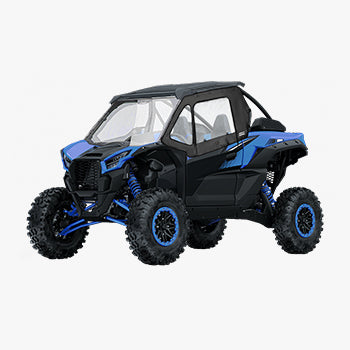

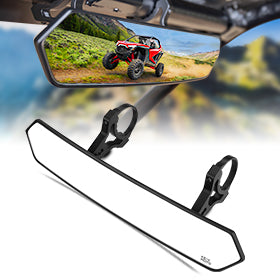
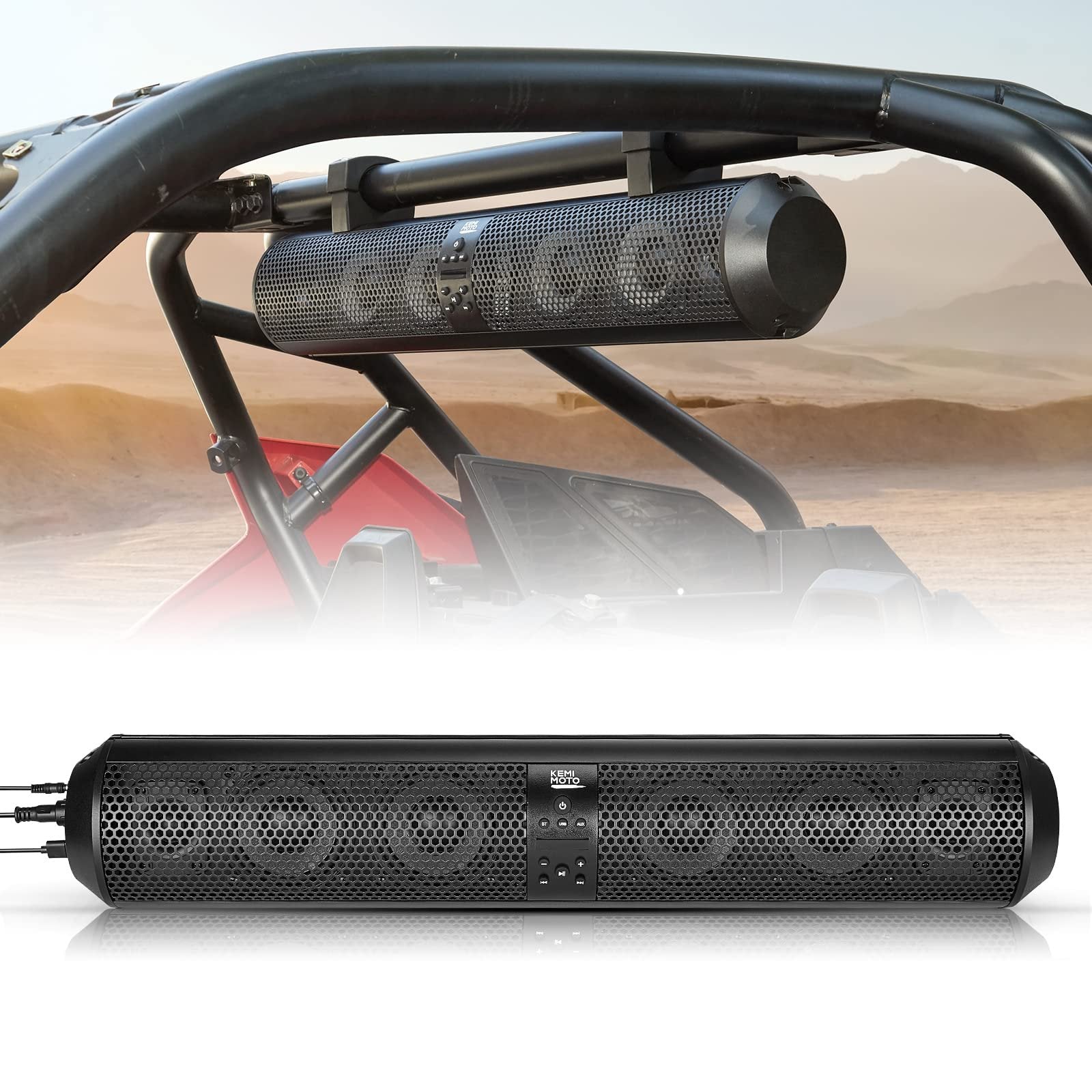




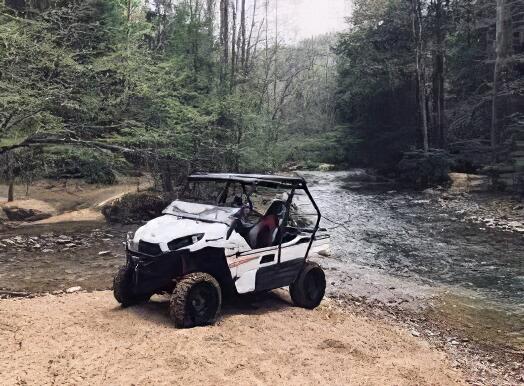
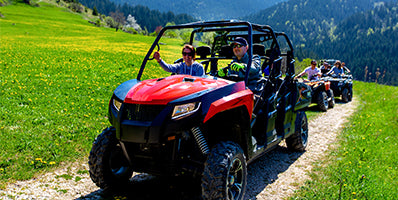

Laissez un commentaire